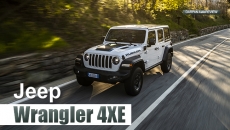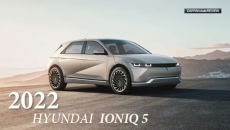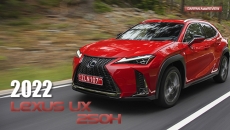With its original e-tron, Audi was one of the first luxury European automakers to offer an electric vehicle. Last year, it expanded its lineup with the more affordable Q4 e-tron. Slotting between two gas-powered models, the smaller Q3 and the larger Q5, the Q4 e-tron is an all-electric compact luxury SUV. It has a lot going for it but it’s not the only small European luxury EV vying for your attention. Another top option is the Volvo XC40 Recharge. It’s based on the brand’s stylish XC40 but is powered by electricity instead of gasoline. The car experts at Edmunds compare them to find out which one is the better buy.
PERFORMANCE AND RANGE Audi offers the Q4 e-tron in two powertrain configurations: a single-motor base version that makes 201 horsepower and a dual-motor all-wheel-drive setup good for 295 horsepower. The latter variant accelerated from 0 to 60 mph in a respectable 5.7 seconds in Edmunds’ testing. It also delivered responsive handling and proved to be plenty maneuverable in tight parking lots.
The XC40 Recharge is also agile and tossable, but it has the bonus of being significantly more powerful. The XC40 Recharge is offered in a single impressive configuration: a dual-motor all-wheel-drive layout with 402 horsepower. Not surprisingly, the Volvo was quicker in testing, needing just 4.5 seconds to reach 60 mph. Additionally, the XC40 Recharge offers a full one-pedal driving mode that allows it to come to a stop without the driver touching the brake pedal. In the Audi, you still have to touch the brakes to fully stop.
On paper, the XC40 Recharge’s 223-mile battery range is disappointing. The similarly priced Tesla Model Y Long Range, for example, has an EPA-estimated range of 317 miles. That said, the small Volvo SUV performed better in Edmunds’ real-world range tests. A 2021 model with a lower 208-mile EPA estimate managed to travel 240 miles, so you can likely expect a newer one with the higher estimated range to exceed that. A dual-motor Q4 e-tron has an EPA-estimated range of up to 242 miles and was also able to beat that in Edmunds’ testing, going 270 miles. The single-motor Q4 e-tron, which Edmunds hasn’t range-tested, offers the most of the group here, with an EPA-estimated 265 miles.
This category comes down to personal preference. The Audi can likely go farther on a single charge, but the Volvo is more entertaining to drive.
Winner: tie
INTERIOR AND TECH The Q4 e-tron’s cabin is proof that Audi knows how to design an interior. It’s modern and classy with a distinct upscale feel. For the most part, the materials are top-notch, though there are some hard plastics that feel out of place. The wide 11.6-inch central touchscreen is responsive and has menus that are easy to navigate. There’s also an available premium audio system tuned by speaker manufacturer Sonos that provides an immersive listening experience.
The XC40 Recharge’s interior is cleanly designed with premium touches that are understated but noticeable once you’re sitting inside. The seats are comfortable but might not feel luxurious enough for some. The XC40 Recharge uses a Google-based in-car operating system that integrates many apps like Google Maps, Spotify and the voice-controlled Google Assistant. These features can be pretty handy but require a steady data connection to work at their best.
Both electric SUVs are fairly spacious for their size. The cargo room behind the rear seats is about the same, but one advantage the Volvo enjoys over the Audi is a small front trunk or “frunk” that can fit a small bag or other odds and ends. It’s a close call, but Audi’s interior wins for its poshness and less finicky infotainment setup.
Winner: Audi Q4 e-tron
PRICING AND VALUE The Audi has the lower starting price at $50,995, but with the base Q4 40 e-tron you have to make do with far less power than the Volvo, which starts around $55,000. But if you want to load up either model with some of the premium features you’d want in a luxury car, the XC40 tops out for less money. While the Audi Q4 50 e-tron is a closer match in terms of power, it quickly eclipses the XC40 in price and makes less power than its Scandinavian rival.
Warranty coverage is about the same for both, though the Volvo includes two years of free maintenance. Neither qualifies for a federal tax credit under the latest legislation.
Winner: XC40 Recharge Electric
EDMUNDS SAYS Between these two EVs, we’d pick the XC40 for its quicker acceleration, adequate real-world range, and comfortable and stylish interior. But if your main priority is range, you’d likely be better served by the Q4 e-tron.






